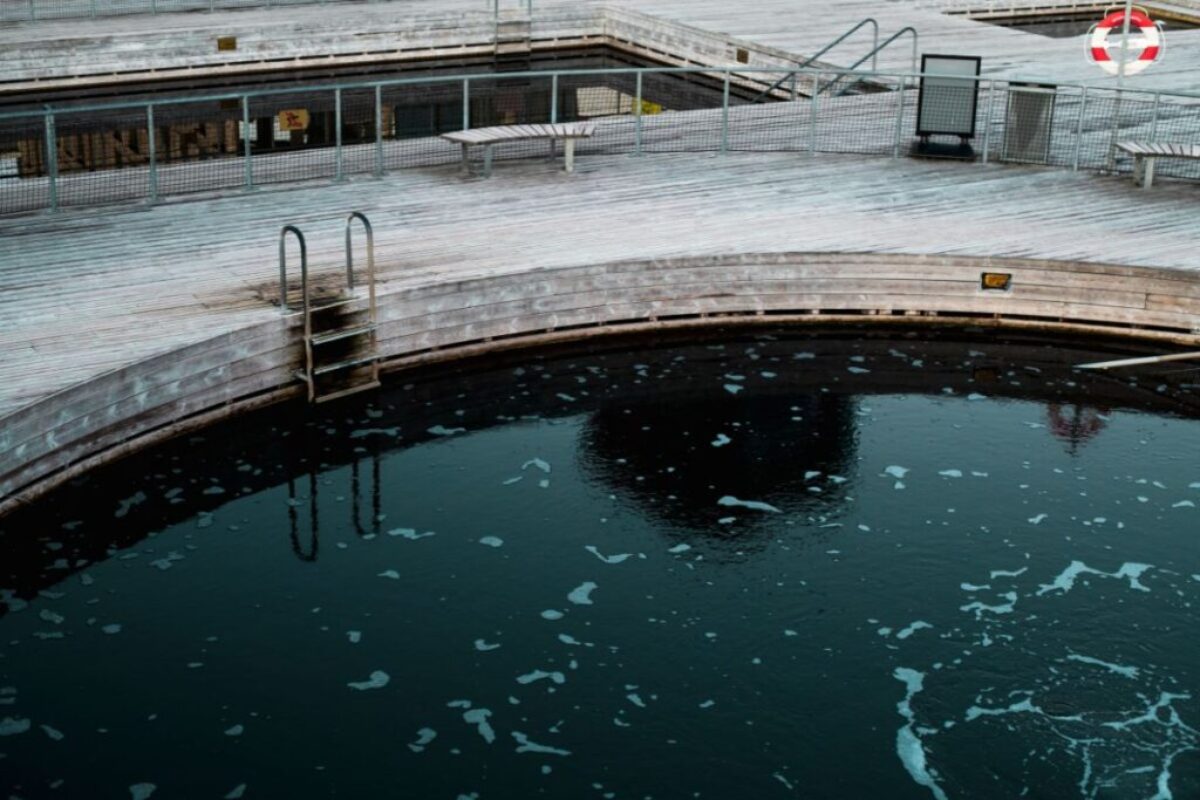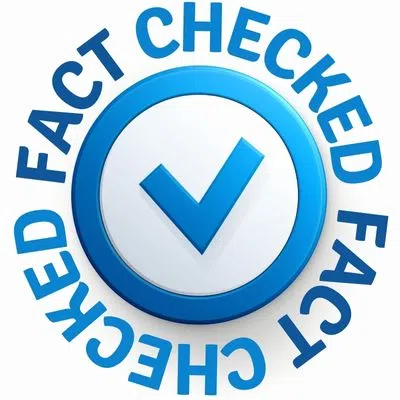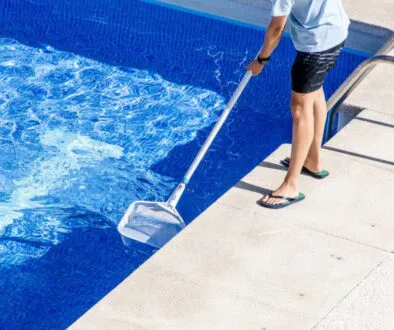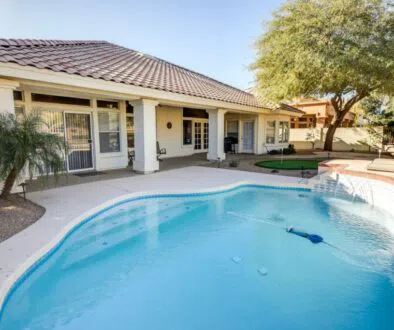How to Close an Inground Pool for Winter

Published April 17, 2023
Pools can bring a lot of joy to the family during hot days, especially during summer. But as soon as the cold days come, particularly winter, it’s the pool owner’s turn to care for their beloved oasis.
Otherwise, the pool may freeze solid before you know it. In fact, it would only take a few days of outside temperatures of below zero for pools, or at least the water surface, to freeze completely.
The rate at which the water may freeze can be much higher if you aren’t using the pool, which is highly likely since it’s too cold. Of course, there’s not much to do to avoid cold temperatures since even the best heaters can’t save your pool from freezing. The best solution is to simply close it.
But then again, why not just let the water freeze and let it defrost once temperatures rise again?
Why Should You Close an Inground Pool for Winter?
The obvious reason is to prevent the pool water from freezing, but if it’s going to defrost anyway once the summer season comes again, why bother? Interestingly enough, freezing isn’t the only problem that winter can bring to your oasis. Another issue is the potential damage to equipment.
As you may already know, a swimming pool consists of a bunch of equipment like filters, pumps, heaters, cleaners, and the like. If they freeze, naturally, they may sustain minor to major damage.
Of course, you don’t want that to happen, hence why you must close the pool. So, even though frozen water will inevitably melt, it’s not advisable to leave them be, especially for a long time.
Many homeowners have had this happen to them in that they’ll neglect their pools only to realize the next year that some of their equipment isn’t working, or at least not functionally as well as before.
Now that you understand the crux of the matter, it’s time to find out how to close an inground swimming pool for winter.
How To Close an Inground Pool for Winter
You’d assume that closing an inground pool for winter is as simple as taking a large piece of tarp and covering the entire pool with it. But surprisingly enough, there’s much more to the process than that.
Let’s start by going over what you need.
- Cleaning equipment (e.g., brush, cleaner, vacuum, etc.)
- pH strip tester
- Pool cover
- Algaecide
- Pool stain and scale remover
- pH level materials (e.g., baking soda, soda ash, muriatic acid, etc.
Once you have all the aforementioned tools and materials, you have to follow these steps:
1. Deep Clean Your Pool
First off, you need to get rid of anything that may be a hindrance to the process, which we’ll refer to as winterizing from now on. These include silt, leaves, and other floating debris on the water’s surface.
You should also get rid of any algae and dirt stuck on the walls. To do so, use a brush and vacuum afterward. Not only will this eliminate hindrances to the winterizing process, but it also makes balancing the water chemistry, a particular step you’ll eventually have to take in this process, much easier.
2. Balance the Water Chemistry
As you probably already know, it’s crucial that a pool has the proper chemical balance. Water chemistry is denoted by the pH level and alkalinity. Ideally, you want the pH level to be around 7.2 to 7.8 and the alkalinity to be roughly 100 ppm. You can easily check this by dipping a pH strip tester.

If the current pH level is higher than the ideal level, add muriatic acid or any pH reducer chemical to lower it. But if the current pH level is lower, add baking soda to raise it, and proceed to the next step.
3. Shock the Pool
Next, you must shock the pool until the chlorine levels reach 1.0 to 3.00 ppm. For your reference, pool shocking is when you add chlorine or similar materials to the pool to raise the chlorine levels.
The idea is to raise the chlorine levels to the point where algae, bacteria, and chloramines can no longer tolerate it. In doing so, you can eliminate the contaminants that might be lurking in your pool.
4. Add Some Algaecide and Pool Stain and Scale Remover
Chlorine levels of 1.00 to 3.00 pm should eliminate bacteria from the pool, but unfortunately, some algae may survive even that amount of chlorine.
That’s why it’s also advisable to add some algaecide for the specific purpose of taking care of algae. While you’re at it, you can add other chemicals like pool stain and scale remover.
5. Lower the Water Level
Before you actually cover the pool, you must ensure that the cover won’t directly touch the water surface, so you’d want to set the water level several inches lower than your usual pool setup.
How much lower you should set it up will vary according to the pool cover’s manufacturer manual.
6. Get Rid of the Pool Accessories
You don’t want the pool accessories to remain in the pool while it’s undercover, so make sure you get rid of the pool accessories. But remember that after taking them out of the pool, you must clean them accordingly before putting them into storage or where you want to put them.
7. Drain the Water and Store the Pool Equipment
Of course, since you won’t be using the pool for a while, nothing good will come out of leaving the water, so make sure you drain the water from your pump. After doing so, take out the pool filter, pump, and other equipment, clean them like you would accessories, and store them inside.
If that’s not possible and they must remain in the pool, make sure they’re covered properly.
8. Cover the Pool
Finally, place your pool cover across the swimming pool. You can use a solid security pool cover or a mesh safety pool cover. Either way, you must ensure it fits perfectly in the pool. If you can’t do that, you should at least make it fit as best as it can.
Takeaways
It’s possible for your pool equipment or the pool itself to sustain no damage at all despite weeks or months of exposure to the freezing cold of winter. However, that doesn’t mean you should take that risk. Make sure you apply what you learned on how to close an inground pool for winter the next time the summer season ends and winter comes.
Hire Boca’s Favorite Pool Builders
Excel Pool and Patio Solutions is your trustworthy provider of pool services in Boca Raton. We are experts in pool and patio remodeling and can handle your resurfacing needs as well. Our technicians are vetted and trained for your guaranteed satisfaction. Get to know us by browsing our website or reaching out to us with any questions.
Contact our team today to request a free estimate for pool construction, maintenance, repairs and more.

Fact Checked By Experts
This is original content and has been diligently fact checked by our internal team of experts. Discover more about the rigorous editorial standards we uphold for our website here.

About The Author
Lenard Arceo is an experienced writer and digital marketing expert. He loves to code and spending time outdoors. He has helped many reputable websites grow over the years.



